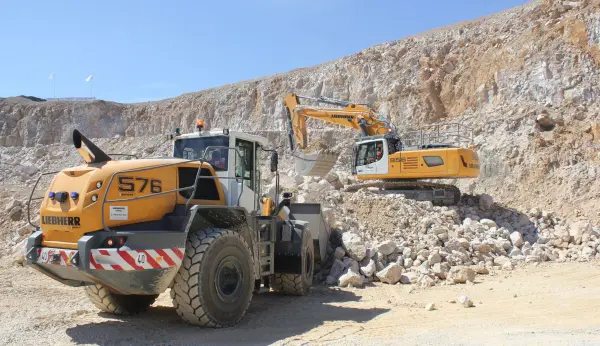Caterpillar celebrate 50 years of wheel loader production
In December 1959 the first production Cat wheel loader - the 944 wheel Traxcavator - was driven off the assembly line at Caterpillar’s plant in Aurora, Illinois.
The 944, fitted with a 2yd3 (1.5m3) bucket and available with either a 105hp (78kW) gas or diesel engine, was the culmination of a seven-year development effort.
The 944 was joined in 1960 by two additional models, the 80hp (60kW) model 922 and the 140hp (104kW) model 966, using buckets of 1.25yd3 and 2.75yd3 (0.92m3 and 2.1m3), respectively. A 1960 Caterpillar press release stated: ‘These machines are operated by conveniently located controls, have a two-speed forward/two-speed reverse power-shift transmission and attain a maximum reverse speed of 30 miles/h.’
The release also quoted W.S. Zeigler, domestic sales manager, who summed up Caterpillar's goal for developing the new wheel loader line: ‘These new Traxcavators will enable operators to perform their work quickly and well, and give them safer working conditions.’
Time changes most things, but the basic qualities Mr Zeigler noted about the first Cat wheel loaders have remained constant through 50 years of continual refinement and through the placement of more than 100,000 Cat medium wheel loaders in the hands of customers.
Although the Cat wheel loader line has expanded over the years, the eight-model lineup of medium wheel loaders — 938H, IT38H, 950H, 962H, IT62H, 966H, 972H and 980H — remains the foundation of the line and serves the largest market segment.
Developing new products in the 1950s was a long, laborious process, necessitating many prototype models and thousands of hours of in-the-dirt testing. Today, of course, the power of computer-aided design allows testing virtual prototypes, and today's engineers can perform more evaluation in hours than their 1950s counterparts could in months of field testing.
The 944, fitted with a 2yd3 (1.5m3) bucket and available with either a 105hp (78kW) gas or diesel engine, was the culmination of a seven-year development effort.
The 944 was joined in 1960 by two additional models, the 80hp (60kW) model 922 and the 140hp (104kW) model 966, using buckets of 1.25yd3 and 2.75yd3 (0.92m3 and 2.1m3), respectively. A 1960 Caterpillar press release stated: ‘These machines are operated by conveniently located controls, have a two-speed forward/two-speed reverse power-shift transmission and attain a maximum reverse speed of 30 miles/h.’
The release also quoted W.S. Zeigler, domestic sales manager, who summed up Caterpillar's goal for developing the new wheel loader line: ‘These new Traxcavators will enable operators to perform their work quickly and well, and give them safer working conditions.’
Time changes most things, but the basic qualities Mr Zeigler noted about the first Cat wheel loaders have remained constant through 50 years of continual refinement and through the placement of more than 100,000 Cat medium wheel loaders in the hands of customers.
Although the Cat wheel loader line has expanded over the years, the eight-model lineup of medium wheel loaders — 938H, IT38H, 950H, 962H, IT62H, 966H, 972H and 980H — remains the foundation of the line and serves the largest market segment.
Developing new products in the 1950s was a long, laborious process, necessitating many prototype models and thousands of hours of in-the-dirt testing. Today, of course, the power of computer-aided design allows testing virtual prototypes, and today's engineers can perform more evaluation in hours than their 1950s counterparts could in months of field testing.



